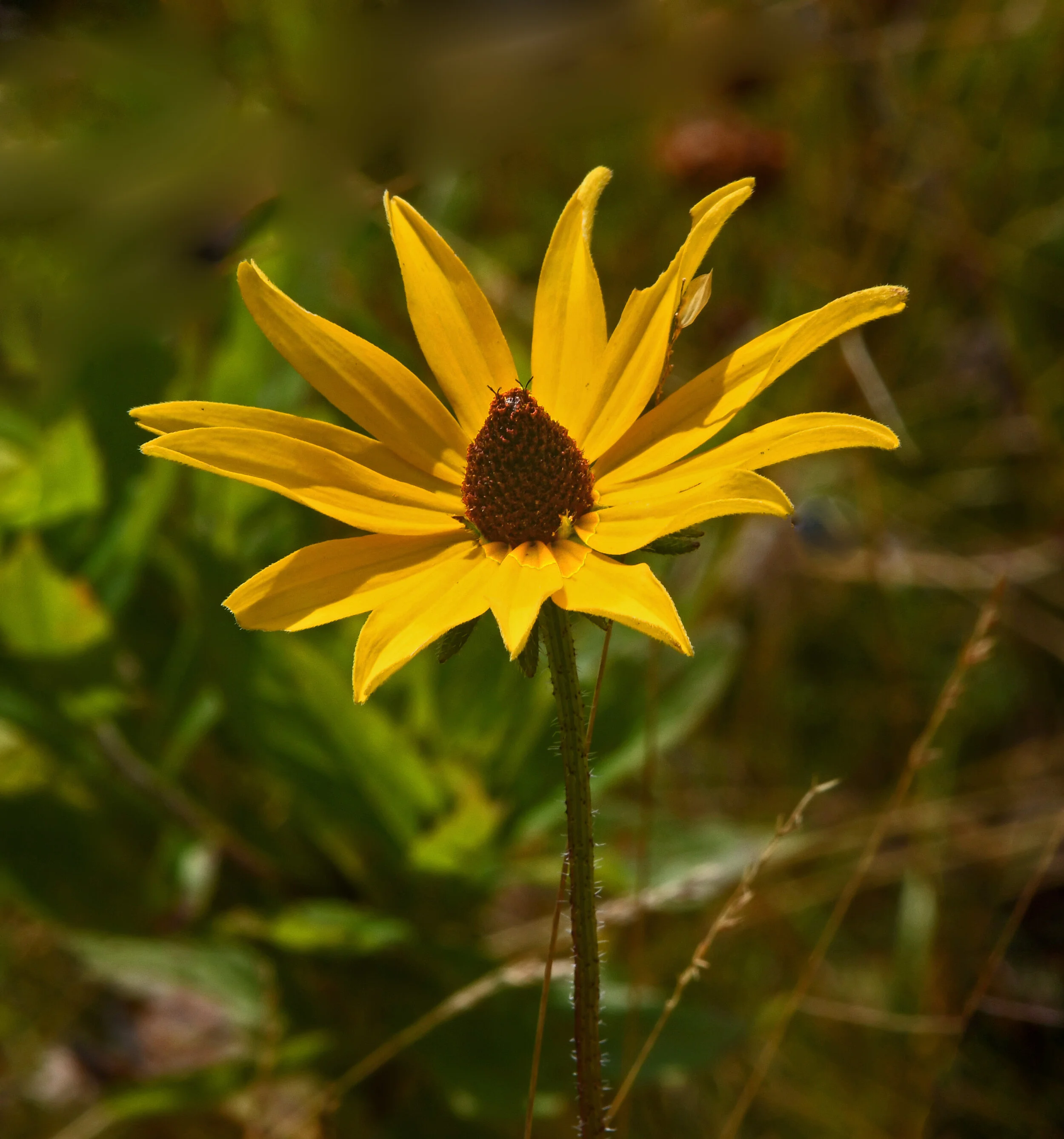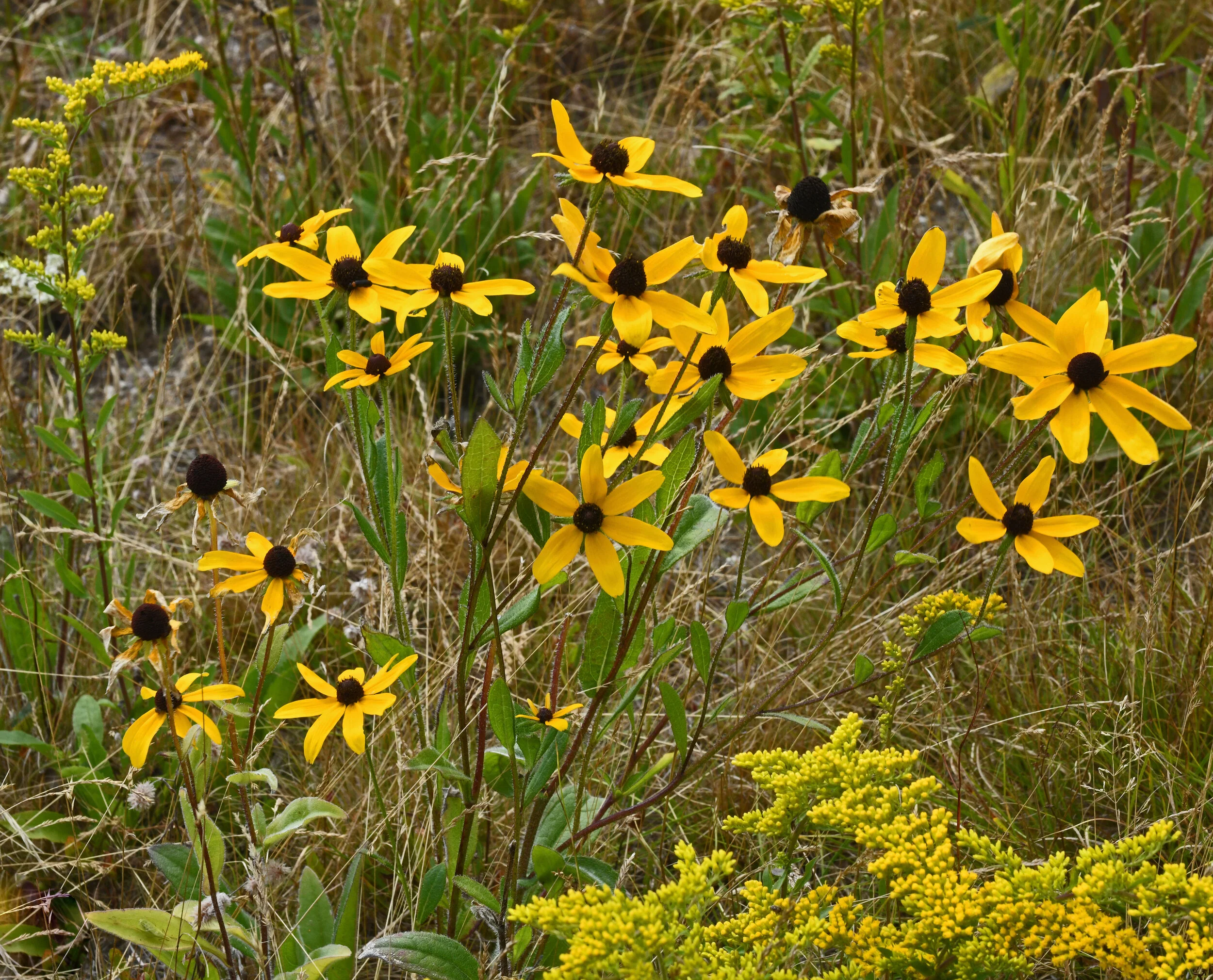Yesterday, I was hidden behind a curtain of cattail leaves at our pond, which is at the base of our sloping North Field. I was after wood duck, but saw only one bedraggled mallard within three hours. However, just as I decided to pack up and leave, our smallest and cutest white-tailed deer fawn came dancing down the hill with his mother about 30 feet behind. (Sex assumed.)
He occasionally would rest and casually look around. She seemed annoyed that he wouldn’t stay close.
They were not aware of my presence at first; they often were in their iconic head-down nibbling position in the uncut vegetation. The fawn’s fading camouflage spots seemed still able to break up his shape a bit among the Queen Anne’s lace and emerging daisy fleabane. The doe’s coat was starting to thicken and turn winter gray.
As soon as I clicked my first “shoot,” Mom’s ears went up and she assumed her frozen alert position. By the second shot, both mother’s and son’s ears and eyes were focusing in my direction. After several quick shots and Mom’s snort, they were gone. They probably never saw me.
Deer don’t see as well as we do during the day, but they have a much wider field of vision (less of a blind spot) and they see better at night, when it’s more important. Deer hear sounds around them much better than we do, especially low frequencies. Those huge, sound-scooping, swiveling ears are very good direction-finding devices. (Brooklin, Maine)


































































